Porsche Mission X follows in footsteps of 918 Spyder and Carrera GT
Symbolic
The timing of the Porsche Mission X’s unveiling is also symbolic: exactly 75 years ago, the Porsche brand was born. On June 8, 1948, the 356 “No. 1” Roadster was the first sports car to bear the Porsche name.
Future of the Porsche hypercar
“The Mission X lays the foundation for the sports car of the future,” said Oliver Blume, CEO of Porsche. “It takes over from illustrious sports cars of yesteryear, such as the 959, the Carrera GT and the 918 Spyder. Like these icons, the Mission X gives the development of future vehicle concepts an important impetus. At Porsche, ‘dare to dream’ and dream cars are synonyms: the brand has only remained itself by continuously changing.”
Dimensions Porsche Mission X
The Porsche Mission X – painted in Rocket Metallic – is about 4.50 meters long, less than 1.20 meters high and 2.00 meters wide. This makes it a relatively compact hypercar. Its wheelbase of 2.73 meters matches that of the Carrera GT and 918 Spyder. For aerodynamic reasons, the Mission X has 20-inch wheels in the front and 21-inch ones in the rear. “As its unmistakable motorsport DNA merges with a luxurious appearance, the Mission X embodies the core of the Porsche brand,” said chief designer Michael Mauer.
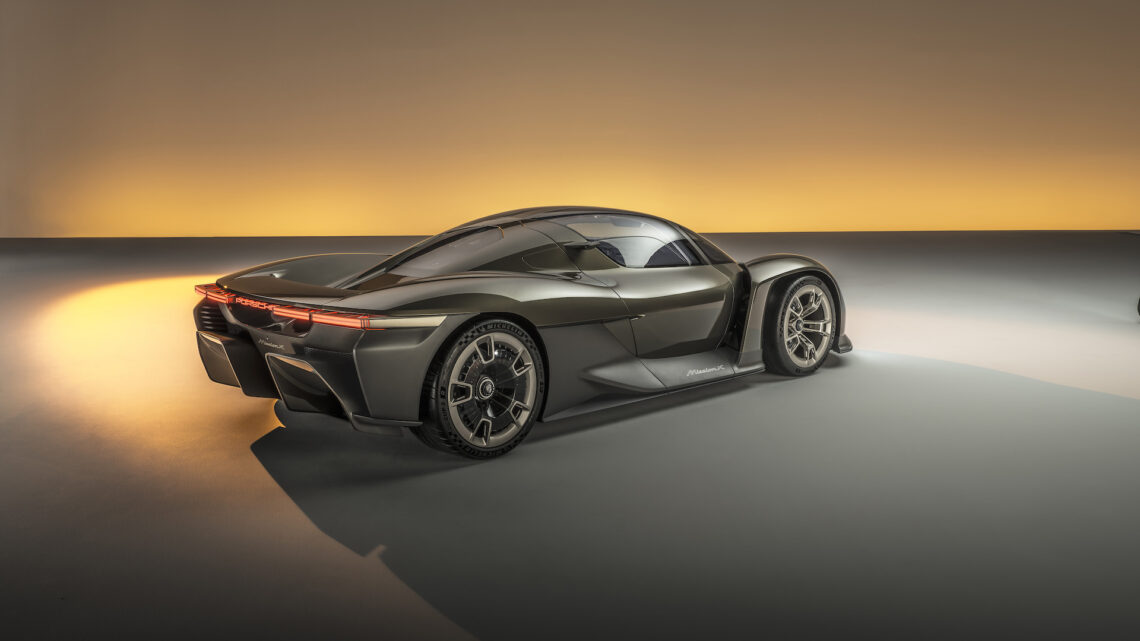
Design Porsche Mission X
Several design elements are executed in carbon, whose distinctive weaving pattern is clearly visible. The design of the Mission X is also characterized by special details. For example, the rear wheels are equipped with transparent aeroblades, whose turbine action optimizes brake cooling. Above the two occupants is a lightweight glass dome with a frame made of CFRP (Carbon Fiber Reinforced Plastics). The doors are suspended from the A-pillar and roof. They open Le Mans-style forward and upward.
Unique lighting
Porsche also used this principle with the legendary 917 race car. Porsche’s characteristic four-point light signature is reflected in headlights inspired by the vertical light units of historic race cars such as the 906 and 908. The LED light modules are supported by an advanced structure in which all light functions come together. At the rear, the light unit with the written-out and illuminated Porsche name seems to float. When the battery pack is charged, the ‘E’ of the mark pulses.
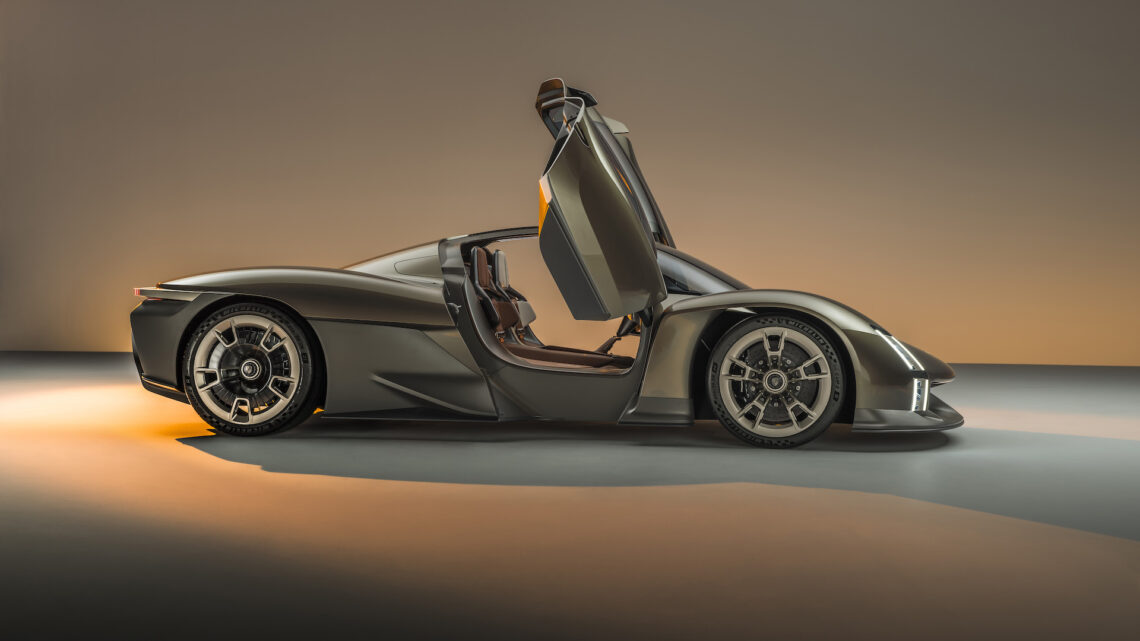
With the new modernized Porsche logo
The Mission X is the first Porsche to carry the new, modernized Porsche logo. This is reflected on the front cover, steering wheel and wheel hubs.
Interior
An asymmetrical design and seats in different colors make it immediately clear that the focus of the interior is on the driver. The seats have a carbon fiber base. The six-point harnesses are attached directly to the monocoque. The racing steering wheel with driving mode switches and gearshift flippers is also a clear reference to motorsports. The Mission X has several cameras on board, which can also record after pressing the “Record” button.
A special eye-catcher on the passenger side is the bayonet system for mounting a stopwatch module. In it fits a Porsche Design-designed stopwatch with an analog and a digital display. The clocks are suitable for racing and rally use. Among other things, they display lap times.
Clear objectives
If the Mission X were to go into production, Porsche’s vision calls for it to meet these conditions:
- It should be the fastest street-legal car on the Nürburgring Nordschleife
- The power-to-weight ratio should be about 1 hp per kg
- The downforce values should clearly surpass those of the 911 GT3 RS
- With its 900V system, charging performance should improve further: charging twice as fast as the Taycan Turbo S
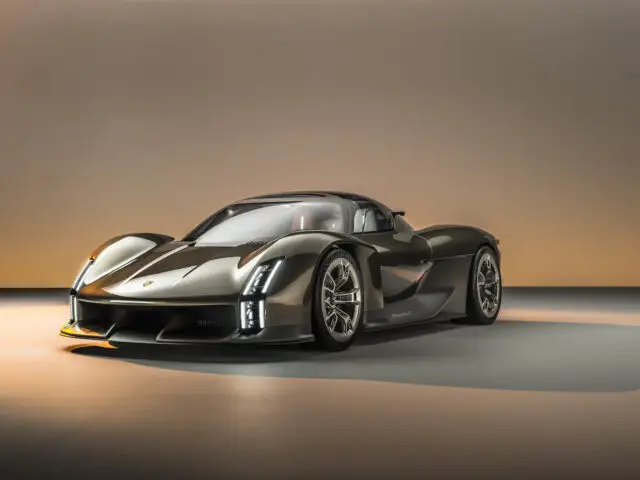
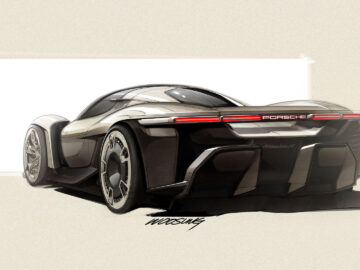
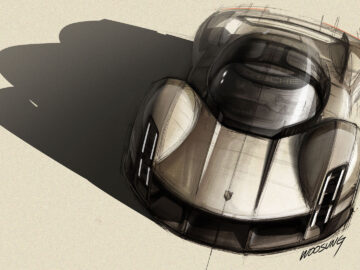

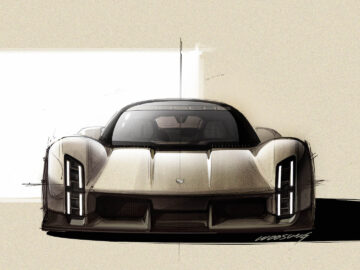
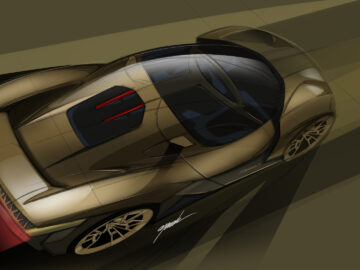
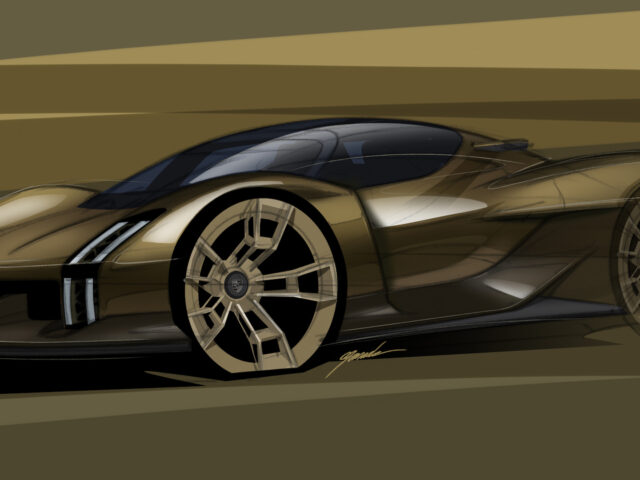
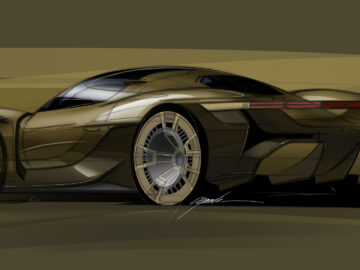
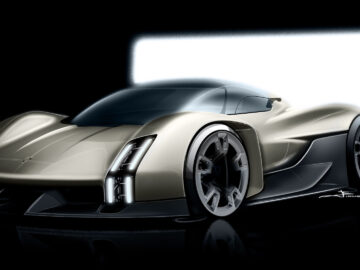
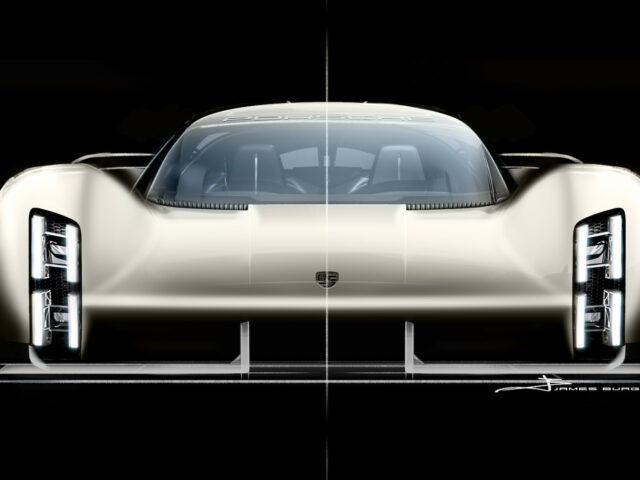
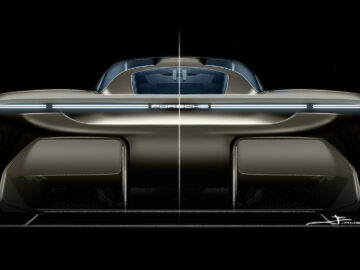
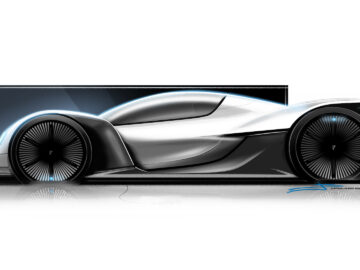
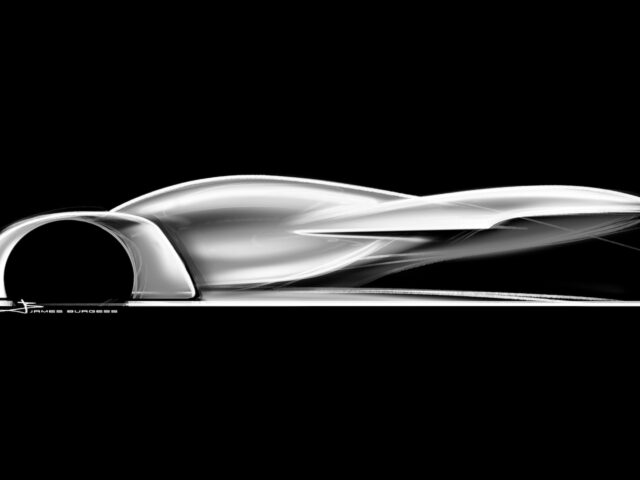

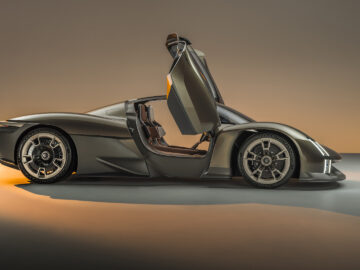
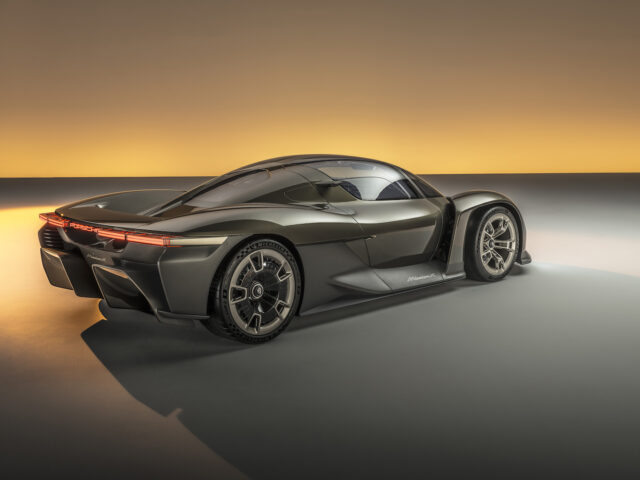
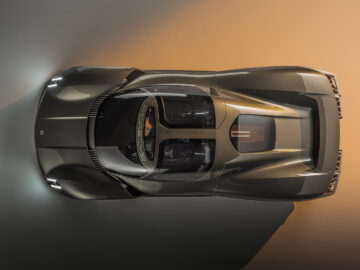

The predecessors of the Porsche Mission S
All of the Mission X’s predecessors were extraordinarily innovative super sports cars.
In 1985, the 959 debuted as a technology platform. It featured a 450-hp six-cylinder twin-turbo boxer engine and very streamlined bodywork. With that, it was good for a top speed of 317 mph. That made it the fastest series production car of its time.
The Carrera GT (2003) was the first series production Porsche made of carbon fiber. Also thanks to its 612-hp V10 and its incredible handling, the Carrera GT became an icon.
The 918 Spyder was the first street-legal car to record a lap time of less than 7 minutes on the Nürburgring Nordschleife (6:57 min.). This was mainly the result of the advanced hybrid technology, with which the 918 Spyder accounted for a system output of 652 kW/887 hp.
Porsche maintains high standards and dares to dream aloud: should the Mission X go into production, it should also and once again be the fastest street-legal car on the 20.6-kilometer Nürburgring Nordschleife.
Will the Porsche Mission X go into production?
Whether the Porsche Mission X will go into production? Porsche does not yet have a concrete answer to that. Yet the manufacturer reveals with one sentence that it is actually coming. After all, it should be the fastest street-legal car on the Nürburgring Nordschleife. The term “street-legal” means that Porsche is initiating a homologation process for the Mission X. In other words, the car is being prepared for street use. Big chance so there will be a limited edition of it on the market.

